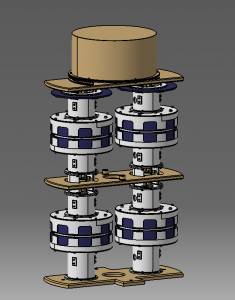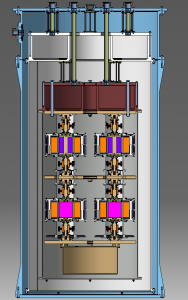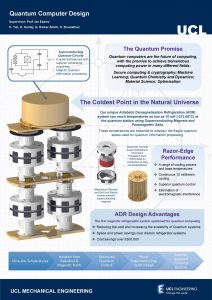Quantum Computer Design

The Quantum Computer Design team
Team Members
- Daniel Hardej
- George Harker-Smith
- Kang Yao Tan
- Niruththan Sivanathan
Supervisor
The Project
This project explored the design of a quantum processor and a novel refrigeration and support system that would enable it to function. The refrigeration and support systems can achieve continuous cooling at temperatures as low as 10mK and enable control and measurement of the qubit states, while simultaneously protecting it from external radiation and electromagnetic field interference.
The Design
The refrigeration and support system achieves continuous cooling at temperatures of 10mK using paramagnetic salt pills and superconducting magnets. The design process was supported by the development of thermal and magnetic models for the system. There are several novel features to ensure a low thermal load on the final cooling stage, including innovative electromechanical heat-switches and integrated instrumentation optimised to support quantum computing devices. To further improve coherence of the qubit states, the cooling space is isolated from electromagnetic interference using a combination of different types of shielding materials verified through magnetic field analysis.

Figure 1: ADR

Figure 2: Cross-sectional view of the assembled cryocooler
 Close
Close


